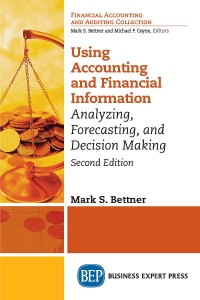
On January 1, Boston Enterprises issues bonds that have a $3,400,000 par value, mature in 20 years, and pay 9% interest semiannually on June 30 and December 31. The bonds are sold at par. 1. How much interest will Boston pay (in cash) to the bondholders every six months? 2. Prepare journal entries to record (a) the issuance of bonds on January 1: (b) the first interest payment on June 30; and (c) the second interest payment on December 31. 3. Prepare the journal entry for issuance assuming the bonds are issued at(a) 98 and (b) 102. Kinkaid Co. is incorporated at the beginning of this year and engages in a number of transactions. The following journal entries impacted its stockholders' equity during its first year of operations, General Journal Debit Credit Cash 300,000 Common stock, $25 Par Value 250,000 Paid-In Capital in Excess of Par Value, Common Stock 50,000 b. Organization Expenses 150,000 Common Stock, $25 Par Value 125,000 Paid-in Capital in Excess of Par Value, Common Stock 25,000 c. Cash 43,000 Accounts Receivable 15,000 Building 81,500 Notes Payable 59,500 Common stock, 525 Par Value 50,000 Paid-In Capital in Excess of Par Value, Common Stock 30.000 d. Cash 120,000 Connon stock, $25 Par Value 75,000 Pold-In Capital in excess of War Value, Connon Stock 45,000 Required: 2. & 3. How many shares of common stock are outstanding at year-end? What is the total paid in capital at year-end? 4. What is the book value per share of the common stock at year and if total pald.in capital plus retained earnings equals $695.000? Match each description 1 through 4 with the characteristic of preferred stock that it best describes in the dropdown next to each description Characteristic Description Holders of the stock are entitled to receive current and all past dividends before common 1. stockholders receive any dividends. 2. Holders of the stock can receive dividends exceeding the stated rate under certain conditions 3. Holders of the stock are not entitled to receive dividends in excess of the stated rate. 4. Holders of the stock lose any dividends that are not declared in the current year. [The following information applies to the questions displayed below.) York's outstanding stock consists of 80,000 shares of noncumulative 7.5% preferred stock with a $5 par value and also 200,000 shares of common stock with a $1 par value. During its first four years of operation, the corporation declared and paid the following total cash dividends. 2016 total cash dividends 2017 total cash dividends $ 20,000 28,000 2018 total cash dividends 2019 total cash dividends $ 200,000 350,000 Determine the amount of dividends paid each year to each of the two classes of stockholders: preferred and common. Also compute the total dividends paid to each class for the four years combined. (Round your "Dividend per Preferred Share" answers to 3 decimal places.) Par Value per Preferred Share Dividend Rate Dividend per Preferred Share Number of Preferred Shares Preferred Dividend Annual Preferred Dividend: Pald to Preferred Paid to Common Dividends in Arrears at year-end 2016 2017 2018 Total Cash Dividend Paid $ 20,000 28,000 200,000 350,000 S 598.000 2019 Total: $ 0 $ 0 Required information [The following information applies to the questions displayed below.) York's outstanding stock consists of 80,000 shares of noncumulative 7.5% preferred stock with a $5 par value and also 200,000 shares of common stock with a $1 par value. During its first four years of operation, the corporation declared and paid the following total cash dividends. 2016 total cash dividends 2017 total cash dividends $ 20,000 28,000 2018 total cash dividends 2019 total cash dividends $ 200,000 350,000 Determine the amount of dividends paid each year to each of the two classes of stockholders assuming that the preferred stock is cumulative. Also determine the total dividends paid to each class for the four years combined. (Round your "Dividend per Preferred Share" answers to 3 decimal places.) Par Value per Preferred Share Dividend Rate Dividend per Preferred Number of Preferred Shares Preferred Dividend Share Annual Preferred Dividend: Total Cash Dividend Pald Paid to Preferred Paid to Common Dividends in Arrears at year-end $ 2016 2017 2018 2019 Totals 20,000 28,000 200,000 350,000 598,000 $ $ 0 0 The equity section of Cyril Corporation's balance sheet shows the following. Preferred stock-61 cumulative, $25 par value, 10,000 shares issued and outstanding Common stock-$8 par value, 100,000 shares issued and outstanding Retained earnings Total stockholders' equity $ 250,000 800,000 535,000 $1,585,000 This year's dividends on preferred stock have been paid. Determine the book value per share of common stock under two separate situations. 1. No preferred dividends are in arrears. 2. Three years of preferred dividends are in arrears












